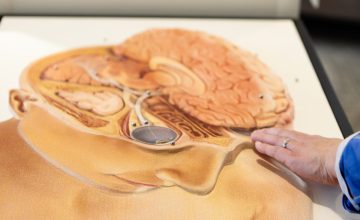
Dry Eye Treatment
Tears are important to eye health. They provide a constant lubricating film to help keep the surface of the eye smooth and clear—and they are essential for healthy vision. When there’s a problem with the quality or quantity of tears produced, Dry Eye can occur.
Left untreated, dry eye can sometimes damage the cornea.  Dry eye symptoms include dryness, irritation or feeling that something is in your eye, blurry vision, watery eyes, vision fluctuation, and soreness.
Dry eye symptoms include dryness, irritation or feeling that something is in your eye, blurry vision, watery eyes, vision fluctuation, and soreness.
While there are several causes of dry eye, Meibomian Gland Dysfunction (MGD) is the most common (86%). Located in the eyelids, Meibomian glands are responsible for releasing a clear oil called meibum that helps keep the surface of your eyes moist and slows the evaporation of tears. When the glands are blocked or the oil quality poor, dysfunction can occur.
Our Dry Eye treatments
Because there are several causes of dry eye, our eye doctors are able to create a sophisticated and personalized treatment plan that may include:
- Thorough evaluation by eye doctors who specialize in the treatment of dry eye or Ocular Surface Disease
- Advanced diagnostic imaging for a detailed look at your Meibomian glands
- Thermal pulsation and expression using iLUX® technology
- Intense pulsed light (IPL)
- Topical treatments including prescription eye drops as needed
- Co-management of dry eye with your regular eye doctor
- Nutrition or lifestyle consultation to aid in natural meibum production or reduce inflammation
How is Dry Eye diagnosed?
Your optometrist may use a special microscope to examine your eyelids and check the quality of the secreted oils (meibum) to diagnose dry eye or MGD. Upon examination, your eye doctor may notice:
- Microvascular (capillary) dilation on the eyelids or face near the eyes
- Notches or scarring along the eyelid margin
- Abnormal (thickened) Meibomian oils
- Breakdown of the tear film layers
- Eye surface changes (such as dry spots and or inflammation)
You may be more at risk of dry eye if you:
- Spend a lot of time staring at digital screens
- Wear contact lenses
- Struggle with eye allergies
- Are female
- Are older than 50 years of age
- Are taking certain medications that may impact tear production
- Have known issues with the structure of your eyelid
- Have certain autoimmune conditions
- Have had or plan to have eye surgery such as refractive (LASIK) or cataract surgery





